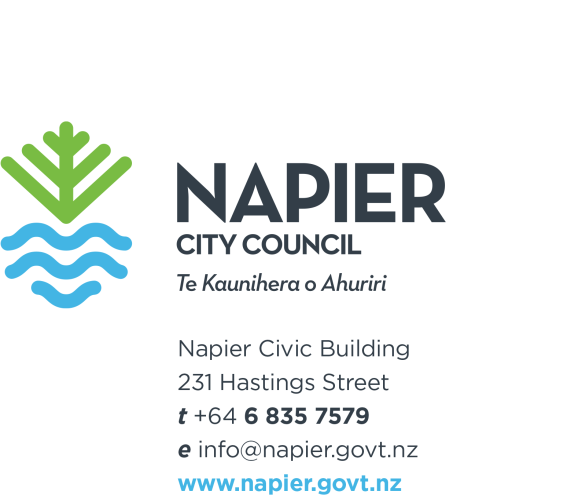 EXTRAORDINARY MEETING OF
EXTRAORDINARY MEETING OF
COUNCIL
Open Agenda
Meeting Date:
Friday 29 June 2018
Time:
3.00pm
Venue:
Council Chamber
Hawke's Bay Regional Council
159 Dalton Street
Napier
Council Members
Mayor Dalton (In the Chair), Councillors Boag, Brosnan, Dallimore,
Hague, Jeffery, McGrath, Price, Tapine, Taylor, White, Wise and
Wright
Officer Responsible
Chief Executive
Administrator
Governance Team
Next Council Meeting
Tuesday 7 August 2018
1
link to page 3
Extraordinary Meeting of Council - 29 June 2018 - Open Agenda
ORDER OF BUSINESS
Apologies
Nil
Conflicts of interest
Public forum
Nil
Announcements by the Mayor
Announcements by the management
New reports
1
War Memorial Design ................................................................................................
.......... 3
2
Amendment to Fees and Charges 2018/19 ................................................................
...... 38
3
Carry forward of projects in progress to the Long Term Plan 2018-28
............................. 40
4
Adoption of the updated underying documents associated with the Long Term Plan
2018-28 ................................................................................................
.............................. 44
5
Adoption of Development and Financial Contribution Policy ................................
.......... 198
6
Adoption of Long Term Plan 2018 - 2028 ................................................................
....... 222
2
Extraordinary Meeting of Council - 29 June 2018 - Open Agenda
Item 1
NEW REPORTS
1. WAR MEMORIAL DESIGN
Type of Report:
Procedural
Legal Reference:
N/A
Document ID:
519623
Reporting Officer/s & Unit:
Charles Ropitini, Strategic Maori Advisor
1.1 Purpose of Report
To consider and approve the Roll of Honour and preferred design for the reinstatement
of the memorial elements and signage to the War Memorial Centre.
Officer’s Recommendation
That Council:
a.
Approve display conventions for the presentation of names on the War Memorial
Roll of Honour as follows:
i.
Rank | Surname | First Name in Full | Middle Initials | Military Awards
b.
Approve Option 3 (landscape solution) as the preferred design to move forward to
a detailed design phase and public consultation:
c.
Approve external signage placement in accordance with Option two in centre of
building forecourt as demarcation of the War Memorial Centre as a site of
significance.
Mayor’s Recommendation
That the Council resolve that the officer’s recommendation be adopted.
1.2 Background Summary
The physical memorial elements of the original 1950s War Memorial Hall were the Roll of
Honour and perpetual flame, presented as a Wall of Remembrance with the flame sitting
in a pool of water.
The Roll of Honour listed Napier war dead from World War II only, in-line with the criteria
for a Government subsidy for World War II memorials.
The War Memorial Hall was renovated and enlarged in to a conference centre by Napier
City Council in 1995 to continue as a living, working memorial, befitting those Napier
Citizens who served and died in that century's conflicts. The memorial elements were
encapsulated by the building with a new foyer extending from the original ballroom.
Through the redevelopment three additional plaques were added recording the names of
those from the wider Napier City area, from Bay View to Meeanee and Taradale. An
3
Extraordinary Meeting of Council - 29 June 2018 - Open Agenda
Item 1
upper tier of plaques was included for names of those who died during World War I,
replacing a former Great War Roll of Honour that was destroyed in the 1931 Earthquake.
A separate plaque recording those who died in post-World War II conflicts was also
added.
This extended Roll of Honour was re-dedicated on 30th September 1995 at the facility's
reopening as the War Memorial Centre, in the 50th year since the end of World War II.
The creation of the revised Roll of Honour was a joint project between the Napier City
Council and the Napier and Taradale Returned Services Association, assisted by grant
allocation from the New Zealand Remembers fund.
The return of the War Memorial title and memorial elements to the Napier War Memorial
Site provides an opportunity to review the Roll of Honour, leverage information that has
been made available to the public domain and provide further inclusions to the Roll of
Honour, expanding the work that was completed in 1995.
To support the presentation of the Roll of Honour and reinstatement of the memorial
space, three potential design options have been assessed by external experts from
Ministry of Culture and Heritage. The designs have been assessed against a design
brief that has been developed by Council Officer’s with significant contribution from Mr
Guy Natusch. The design brief has been signed off by the War Memorial Working Group
as the guide for development and assessment of the memorial design.
This paper recommends an approach for the display of names on the Roll of Honour and
also presents the assessed memorial designs in which the Roll of Honour will be housed.
This paper also presents options for external signage as a flagstone marking the entire
site as a memorial site of significance.
1.3 Issues
Roll of Honour
Challenges for a Roll of Honour review exist in the following areas:
1. Absence of national guidelines and recommendations for eligibility criteria, and
presentation of a Roll of Honour.
2. Restrictions to NZDF personnel files for World War II and all conflicts post-1921.
The challenges related to Honour Roll’s in New Zealand are surmised by Ministry of
Culture and Heritage Senior Historian’s Imelda Bargas and Tim Shoebridge in their book
New Zealand’s First World War Heritage:
“… These groups faced a more difficult task if they wanted to individually name
those they were honouring. Would they just list the fallen, or all who had served?
The vast majority decided to list only the names of the fallen, but some included
those who died shortly after the war, or in the period before the memorial was
unveiled. Some communities added the names of men who died in the decades that
followed, while other memorials, notably throughout Southland, include lists of
‘repatriated’ or ‘returned’ men. The next problem was how to come up with an
accurate list. Some groups had existing rolls or registers, but others had to appeal
to the public for nominations. This led to names being misspelt or omitted, and to a
jumbling of NZEF and imperial names, not to mention those of current and past
residents, students and staff, workmates and workers, parishioners and members.
The inconsistency of such choices made long ago, and the lack of evidence about
4
Extraordinary Meeting of Council - 29 June 2018 - Open Agenda
Item 1
the decision-making process, can lead modern viewers of these memorials to
question their accuracy and stir a desire to ‘fix’ them.”1
Through the challenges Bargas and Shoebridge outline, there is acknowledgement that
a Roll of Honour review may not result in a definite and complete list of war dead, but
rather is a continuous effort to keep as accurate a list as possible, with the information
available in our time.
Memorial design and external signage
Public sentiment has pushed for the return of a flagstone marking the War Memorial site
clearly in a similar way to the 1995 flagstone.
With the reinstatement of a more prominent Wall of Remembrance and expanded Roll of
Honour, the site is more visibly a war memorial site in its entirety and external signage in
the form of a flagstone should be placed with consideration and balance to preferred
memorial design.
The reinstatement of this memorial design places people at the core through the Roll of
Honour and it is acknowledged that the current Cenotaph in Memorial Square
commemorates significant battles.
1.4 Significance and Engagement
Roll of Honour
Given the challenges of reaching concensus relating to Napier’s Roll of Honour, the War
Memorial Steering Group identified the need to canvas public opinion on the review and
establishment of criteria for the Roll of Honour. As a result, three public meetings were
held:
Napier RSA, 10.00am Wednesday 24th January 2018
Taradale RSA, 5.30pm Wednesday 24th January 2018
Greenmeadows Hall, 5.30pm Thursday 25th January 2018
At the public meetings, an open forum workshop was conducted with the following
questions asked of the public:
1. Defining Napier Citizenry, inclusive of Taradale Meeanee and Bayview
Question:
As a centre of enlistment during World War I and II, many men and women travelled
to enlist from outside of the Napier city boundaries. How important is it to you that
those commemorated on the Napier Roll of Honour are citizen residents of Napier? Outcome:
General concensus across the three public meetings reflect that:
1. No names from the previous 1995 iteration of the Roll of Honour are to be
removed unless there is a very good and legitimate reason for removal.
2. Research criteria is to be applicable within the physical boundaries of greater
Napier from the Tūtaekurī river as the Southern boundary to the former
Wairoa Borough Council boundary to the North. To be eligible a person must
either be:
Born in Napier
Enlisted in Napier
Next of Kin resides in Napier
Employed in Napier
Educated in Napier
1 ‘
First World War Centenary Series – Volume 1: New Zealand’s First World War Heritage,’ Imelda
Bargas and Tim Shoebridge, Exisle Publishing Auckland, 2015, page 236.
5
Extraordinary Meeting of Council - 29 June 2018 - Open Agenda
Item 1
Church parish is in Napier
3. The research criteria is applicable to those not currently on the Roll of Honour
and who are being discovered and added through research.
2. Eligibility Criteria - Roll of Honour
Question:
A Roll of Honour typically commemorates those who have died overseas while in
active service. How important is it to you that only those who have died overseas in
active service are commemorated on the Roll of Honour? Ordinarily a person’s death must be a result of that conflict over a specified period of
time - what would you consider a fair timeframe to specify for death as a result of
active service at home or abroad?
Outcome:
General concensus across the three public meetings reflect that:
1. Only those that died on active service at home or abroad are to be
commemorated
2. Timeframe for death in service is to be in accordance with the New Zealand
Government dates from the official commencement date to the official end
date of that conflict.
3. The Australian War Memorial elegibility criteria is adopted with appropriate
changes to be specific to Napier New Zealand.
3. Naming conventions
Question:
How important is it to you that the naming conventions are considered by the Steering
Group to include the service number and additional information that could be added
into this Roll of Honour? Outcome:
1. Expansion of information was to see the first name written in full for the following
reasons:
a. A first name written in ful denotes a person’s sex and cultural background
(with the exception of unisex names), whereas initials would require further
identifiers, particularly to denote women who served in conflict.
b. Consideration that middle names in full would add inconsistent length to each
line of the Roll with some people not having registered middle names.
2. There was a desire to see provision made for families to provide additional
information such as family names or nicknames that were common use in their life
3. Rank and Military Decorations should be displayed as recognition of achievement
4. While it was agreed that service numbers are unique identifiers, consensus could
not be reached on whether the service number should be listed on the physical
Roll of Honour or accessible through a digital channel which provides all
information on the listed service person.
Roll of Honour Option One:
Rank | surname | first name in full | middle initials | military awards
This option meets the outcome of public consultation and feedback captured in regards
to naming conventions and display of the Roll of Honour.
Roll of Honour Option Two:
Service # | surname | initials | military awards
6
Extraordinary Meeting of Council - 29 June 2018 - Open Agenda
Item 1
Option two inclusive of the service number is designed for research purposes as a
unique identifier of an individual, however, this criteria for display has limitations for
research, particularly for those who may have held multiple service numbers. As a list,
the service number does not promote the humanness of the Roll of Honour.
See Appendix A for examples of Roll of Honour
War Memorial Design
Three design options for the War Memorial have been assessed by external experts from
the Ministry of Culture and Heritage:
Imelda Bargas
– Senior Historian, manages the Flags, Symbols and Emblems
Act and is responsible for memorials. Is a respected author and has published
works on NZ’s war history.
Ashley Mackenzie-White
– National War Memorial Park Education Manager,
manages the Pukeahu Education Centre and writes education programmes for
national and foreign memorials in the park.
The three memorial options have been assessed through a design criteria matrix that has
assessed the key elements described in the Memorial Design Brief.
The design brief has been a collaboration between Council Officer’s and Mr Guy Natusch
and has been endorsed and signed off by the War Memorial Working Group.
Key Design Considerations include:
Display of the Roll of Honour as provided by the Roll of Honour Working Group.
Design for remembrance and contemplation through landscaping, structures and
sculptural form. Incorporate progression through or around the space for the dual
purpose of education and contemplation.
Design to meet CPTED guidelines.
Engagement with mana whenua to include te reo Māori and decorative motif where
and when appropriate
Key Design Features:
Perpetual flame to be visible and related to the Roll of Honour
Contemplation – a place to pause, read and reflect
Shelter – protection from the elements
Education – linking the new Memorial with the MTG education programmes and
passive learning through inclusion of historical text
Flagpoles
Plaques - empathy for the material in which the Roll of Honour is to be displayed with
a clear rational for the material used.
Council are to select a preferred design option taking into consideration the feedback
from Ministry of Culture and Heritage. This preferred design is then to be taken through a
period of community consultation for consideration of elements of symbolism and
emotion that promotes remembrance and evokes contemplation.
7
Extraordinary Meeting of Council - 29 June 2018 - Open Agenda
Item 1
Three design options were assessed against the matrix with the following summaries:
Option One – Annex attached to the main Memorial Building
Summary of feedback is that this solution does not fully meet the design brief with limited
opportunity for inclusion of emotion and symbolism, education programmes and 24/7
access and ownership.
Option Two – Building solution outside of the main Memorial Building
Summary of feedback is that this design is strong in shelter and access, however has
limitations in the ability to fully view and appreciate the Roll of Honour. The building is
dominant and overshadows the significance of the Roll of Honour. As a predominantly
concrete structure, opportunity for ongoing landscaping and enhancement of the area is
reduced. The design does not provide opportunity for the public to provide consultation
in the detailed design phase.
Option Three – Landscape solution outside of the main Memorial Building
Summary of feedback is that this design is strong in opportunity to include the public into
consultation of the detailed design with options provided for placement of the Roll of
Honour and perpetual flame. The design is open allowing for passive remembrance and
education to take place.
As a landscape solution this design can be expected to change and evolve as the
landscape around it is continually enhanced over time.
See Appendix B for full assessment Summary
External Signage
Option One
External signage is to the extreme front left of the building (from Marine Parade) flanked
by a flag pole. This option in balance with the Roll of Honour at the extreme right of the
site, clearly demarcates the entirety of the site as a War Memorial without compromise to
the egress routes for vehicles.
This option can also see the main Conference Centre brand moved from the current front
to side of the new building.
Option Two
External signage is placed prominently in the centre of the main forecourt of the building,
with gold lettering in a traditional and respectful font.
Conference Centre brand remains in current place on the front of the new building.
This solution poses safety risk to trucks and vehicles accessing the main entrance to the
Memorial Building with tight space for manoeuvring safely in and out of the forecourt.
See Appendix C for images of external signage
1.5 Implications
Financial
Financial implications are in the areas of:
1. Accessing service personnel files for post-1921 information: While enlistment
and deceased lists give a good indication of Napier people serving in post-1921
8
Extraordinary Meeting of Council - 29 June 2018 - Open Agenda
Item 1
conflicts, for absolute clarification, service personnel records may need to be
accessed which incurs a fee per file accessed.
2. Additional information displayed on the Roll of Honour: Increasing the
information displayed on the Roll of Honour increases cost for production,
however the detailed design phase of the memorial may identified cost effective
ways for inscribing into the Roll of Honour plaques leveraging laser technology
as an example.
Memorial design options assessed by Ministry of Culture and Heritage hold their own
financial implications that are outlined further below.
Social & Policy
Policy is required for the entirety of the War Memorial Centre inclusive of:
1. Roll of Honour Eligibility Criteria
2. Memorial Maintenance
3. Ceremonial Protocols (e.g. flag flying and wreath laying)
Risk
An acknowledged risk exists in the correctness of information available in the public
domain for researching the Roll of Honour. Risk is increased with the level of information
displayed.
Placement of external signage in the middle of the forecourt is a safety risk for entrance
and exit of trucks and multiple vehicles.
1.6 Options
The options available to Council are as follows:
a. The Roll of Honour display conventions:
i. Rank | Surname | First Name in Full | Middle Initials | Military Awards
ii. Service # | Surname | Initials | Military Awards
b. Memorial design:
i. Option One – Annex solution attached to the main Memorial Building
ii. Option Two – Building solution outside of the main Memorial Building
iii. Option Three – Landscape solution outside of the main Memorial Building
c. External signage:
i. Option One – Signage to the left of the site flanked by a flag pole
ii. Option Two – Signage in the middle of the forecourt
1.7 Development of Preferred Option
Roll of Honour – Option One
Rank | surname | first name in full | middle initials | military awards
The recommendation to display the Roll of Honour in the following manner
acknowledges the achievement of rank and promotes active learning in wanting to know
more about rank and military award abbreviations. This display formula follows a criteria
of honour, where the display of the first name in full creates a deeper appreciation for the
loss of human life and contribution of Napier and Hawke’s Bay to significant global
conflicts.
9
 Extraordinary Meeting of Council - 29 June 2018 - Open Agenda
Item 1
Extraordinary Meeting of Council - 29 June 2018 - Open Agenda
Item 1
War Memorial Design – Option Three (Landscape Solution)
Perpetual flame to be visible and related to the Roll of Honour
Flame is at the heart of the design. Good consideration of flame in water as per
original design.
Gives a sense of cleansing. Flame is stylised.
Flame is at the centre of the design however is at a distance from the Honour Rolls.
Design concept shows consistency in use of materials across the Flame and Honour
Rolls providing a good visual connection.
Contemplation – a place to pause, read and reflect
As an open space the design provides multiple opportunities for additional placement
of symbolic representation.
Allows for strong contemplation of the Flame without cluttering the Honour Rolls.
Potential options are inclusion of historical details, poetry, commissioned artworks
and ongoing potential for landscaping to enhance contemplation.
Promotes passive remembrance.
Shelter – protection from the elements
Design includes a pergola type structure that could be developed further through the
detailed design however in its current form does not provide sufficient shelter.
10
Extraordinary Meeting of Council - 29 June 2018 - Open Agenda
Item 1
Education – linking the new Memorial with the MTG education programmes
and passive learning through inclusion of historical text
Design provides very strong ability for formal and passive education to take place.
As a landscape solution there is ability to link the current environment to the
memorial e.g. Pōhutukawa trees and cultural significance to Māori.
External environment is easy to work with whole classes and “exposes” formal
education e.g. not hidden in a room in a building.
There are multiple opportunities for children to be a part of the memorial with
unconstrained limitations e.g. memorial rubbings.
Strong scope to promote passive education about Napier’s contribution to the
sacrifice of war without focus on the gory.
Flagpoles
No – the design does not include a flag solution with the recommendation the
flagpole is placed close to the War Memorial Centre to connect the Roll of Honour
and Flame with the building to reinforce the entirety of the site as a memorial.
Plaques - empathy for the material in which the Roll of Honour is to be
displayed with a clear rationale for the material used.
Honour Rolls are depicted in two positions giving choice for the detailed design
phase – options are good for consultation.
Acknowledgement of Corten Steel panels matching the materials of the Flame,
creating consistency and association between the both.
Potential for WWI Honour Roll to be traditional in stone and WWII Honour Roll in
Corten Steel.
Honour Rolls are at a consistent level and are grounded.
The use of modern materials with back-lighting is being used increasingly across the
country.
General Comments
Has multiple opportunities for further incorporation of symbolism and emotion
through the detailed design phase. Gives choice for placement of memorial
elements and promotes remembrance and contemplation with Honour Rolls and
Flame core to design.
Can be sympathetic to the original design
External Signage – Option two
Whilst there is a risk with the placement of the external signage prominently in the centre
of the main forecourt of the building, with gold lettering in a traditional and respectful font
this can be mitigated to some extent by bringing it as far forward as possible.
11
link to page 13 link to page 17 link to page 35
Extraordinary Meeting of Council - 29 June 2018 - Open Agenda
Item 1
Conference Centre brand remains in current place on the front of the new building.
1.8 Attachments
A
Roll of Hono
ur ⇩
B
Full Assessment Summary
⇩
C
External Signage Ima
ges ⇩
12
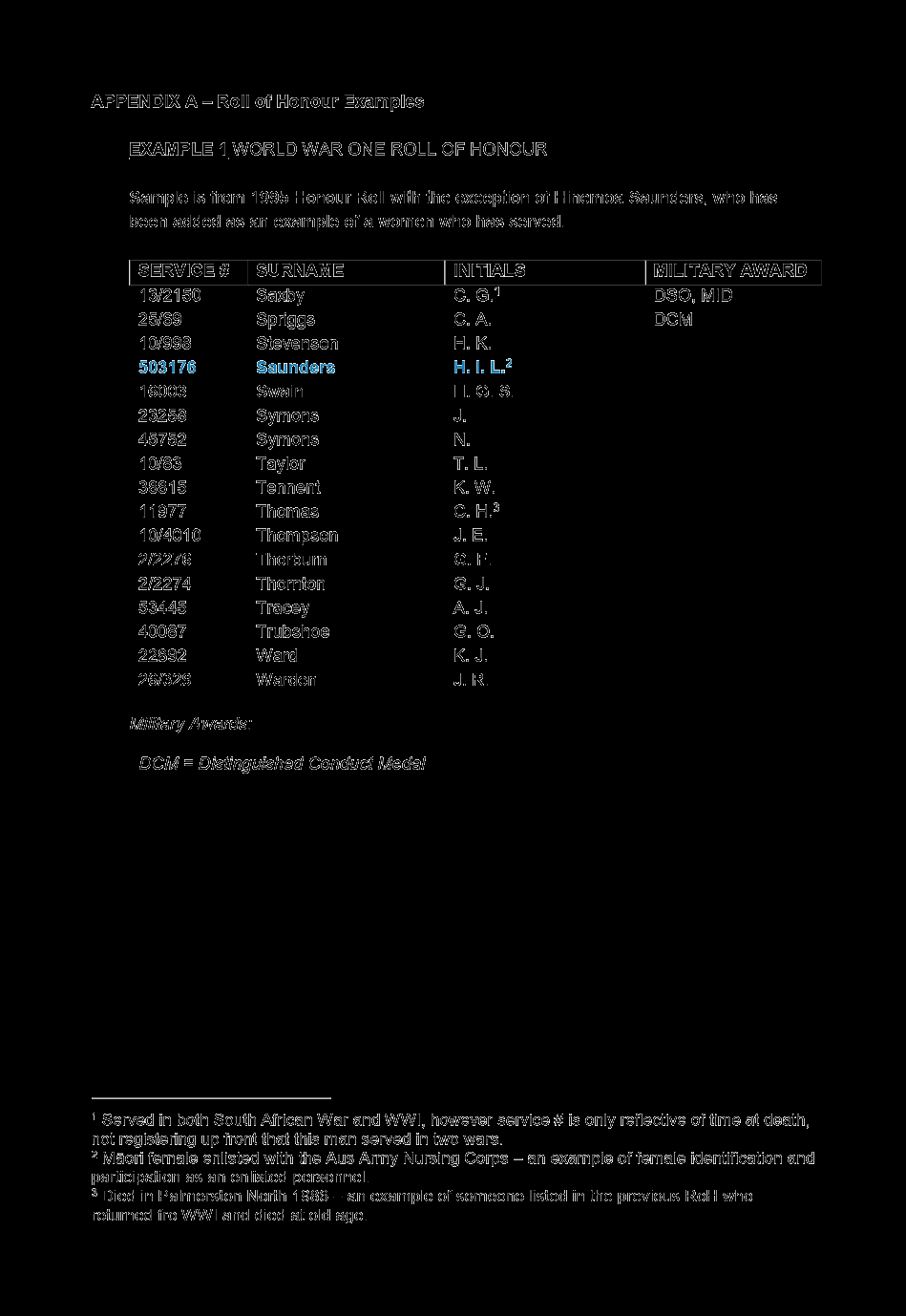 Extraordinary Meeting of Council - 29 June 2018 - Attachments
Item 1
Attachments A
13
Extraordinary Meeting of Council - 29 June 2018 - Attachments
Item 1
Attachments A
13
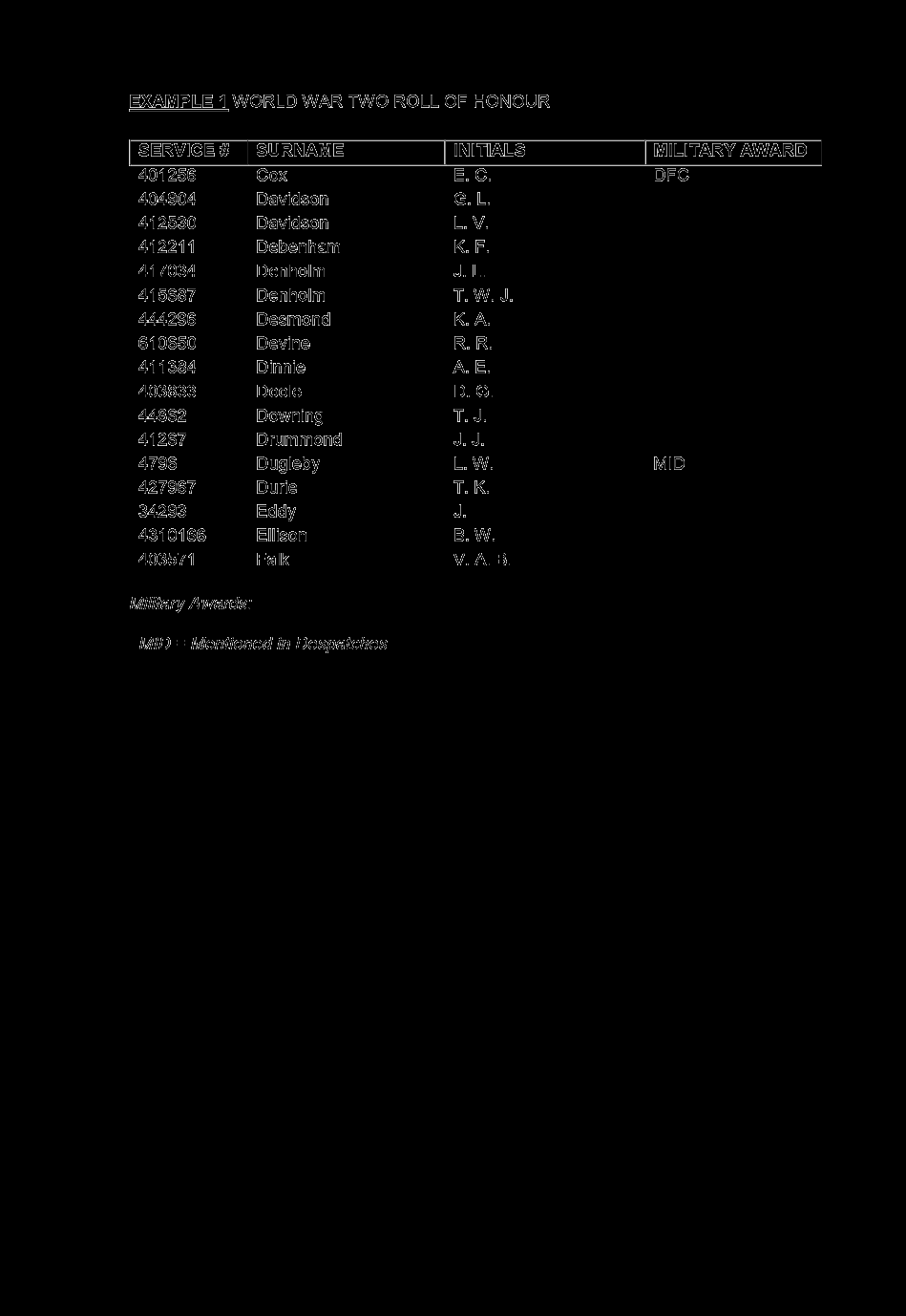 Extraordinary Meeting of Council - 29 June 2018 - Attachments
Item 1
Attachments A
14
Extraordinary Meeting of Council - 29 June 2018 - Attachments
Item 1
Attachments A
14
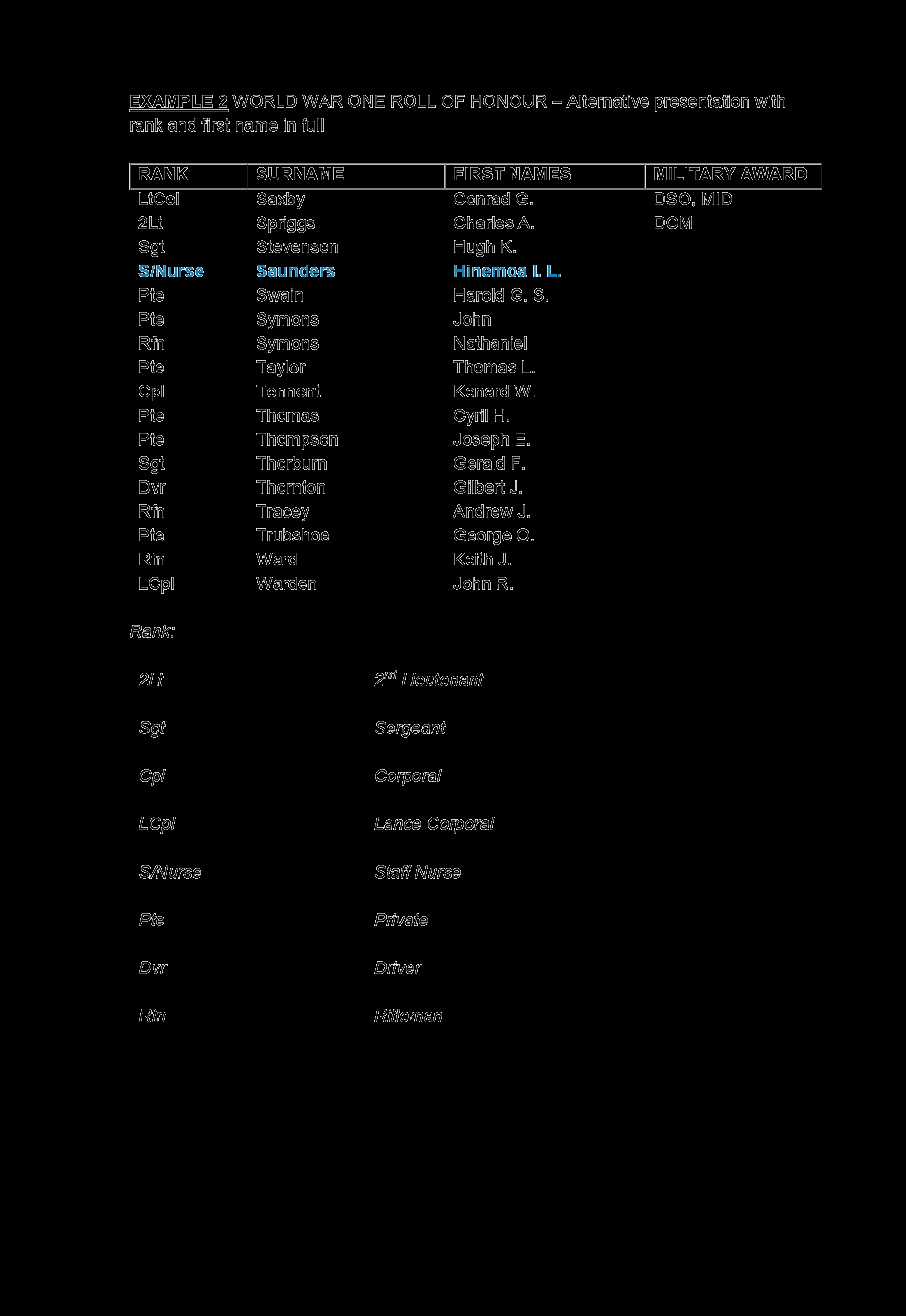 Extraordinary Meeting of Council - 29 June 2018 - Attachments
Item 1
Attachments A
15
Extraordinary Meeting of Council - 29 June 2018 - Attachments
Item 1
Attachments A
15
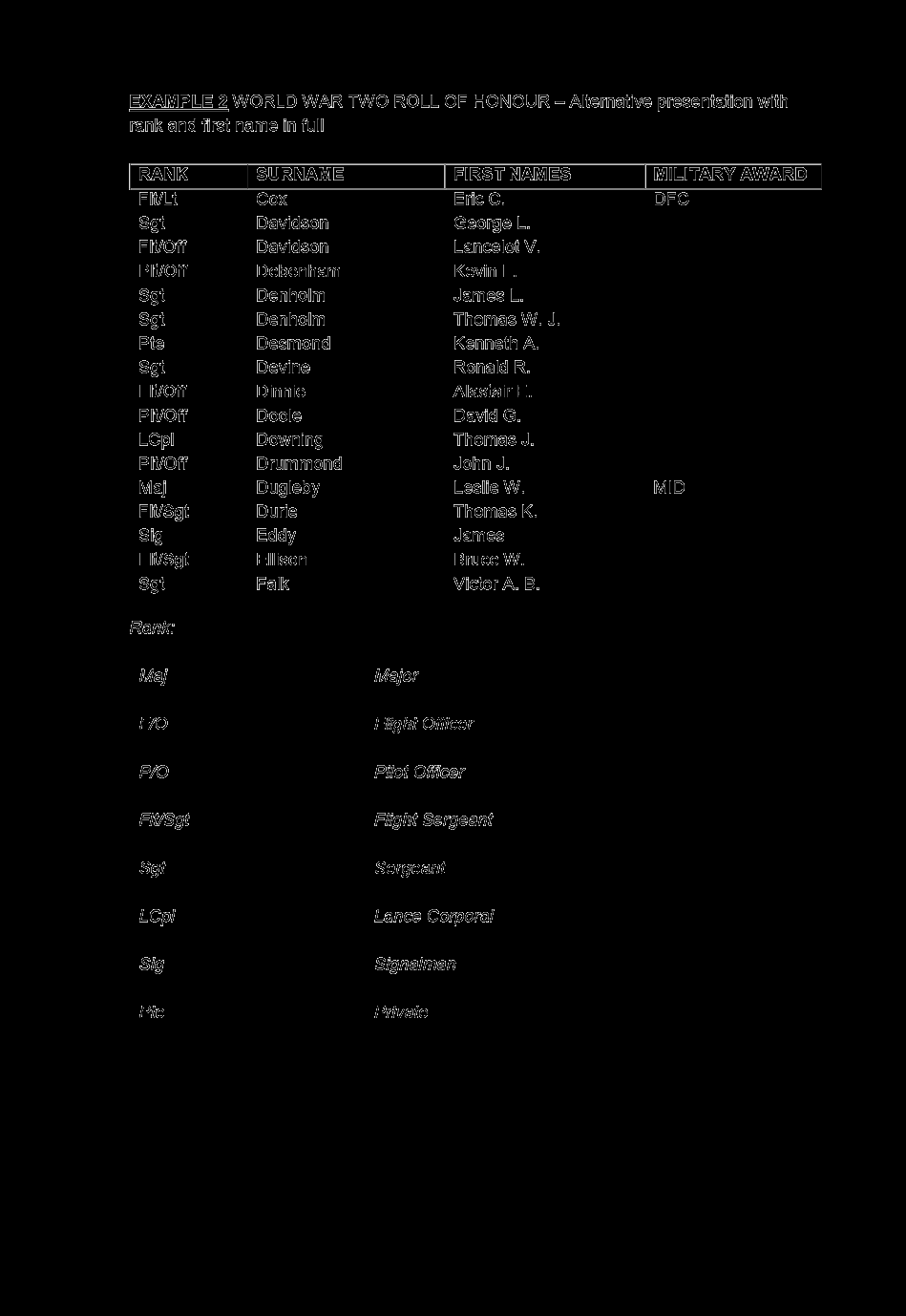 Extraordinary Meeting of Council - 29 June 2018 - Attachments
Item 1
Attachments A
16
Extraordinary Meeting of Council - 29 June 2018 - Attachments
Item 1
Attachments A
16
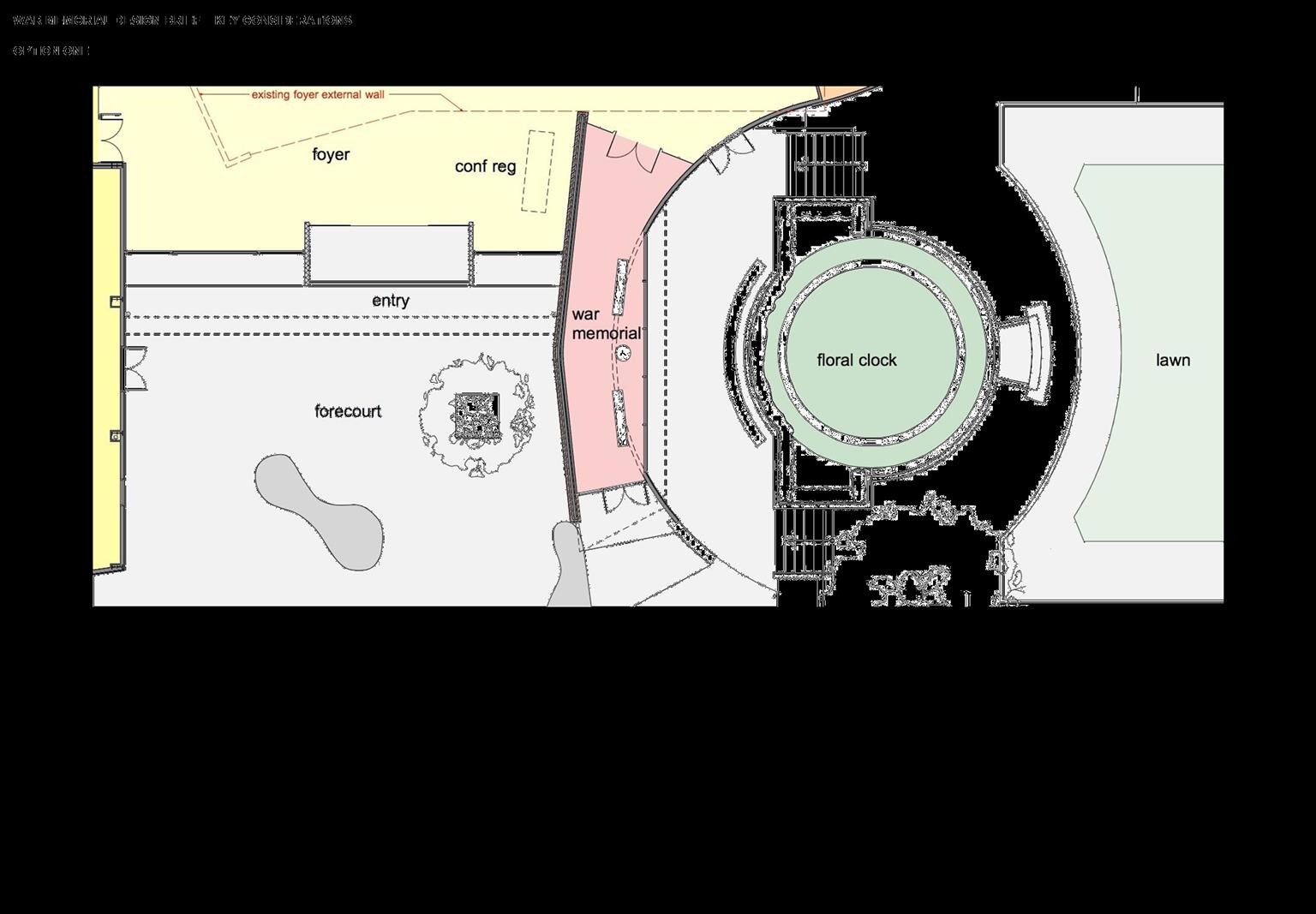 Extraordinary Meeting of Council - 29 June 2018 - Attachments
Item 1
Attachments B
17
Extraordinary Meeting of Council - 29 June 2018 - Attachments
Item 1
Attachments B
17
 Extraordinary Meeting of Council - 29 June 2018 - Attachments
Item 1
Attachments B
19
Extraordinary Meeting of Council - 29 June 2018 - Attachments
Item 1
Attachments B
19
 Extraordinary Meeting of Council - 29 June 2018 - Attachments
Item 1
Attachments B
21
Extraordinary Meeting of Council - 29 June 2018 - Attachments
Item 1
Attachments B
21
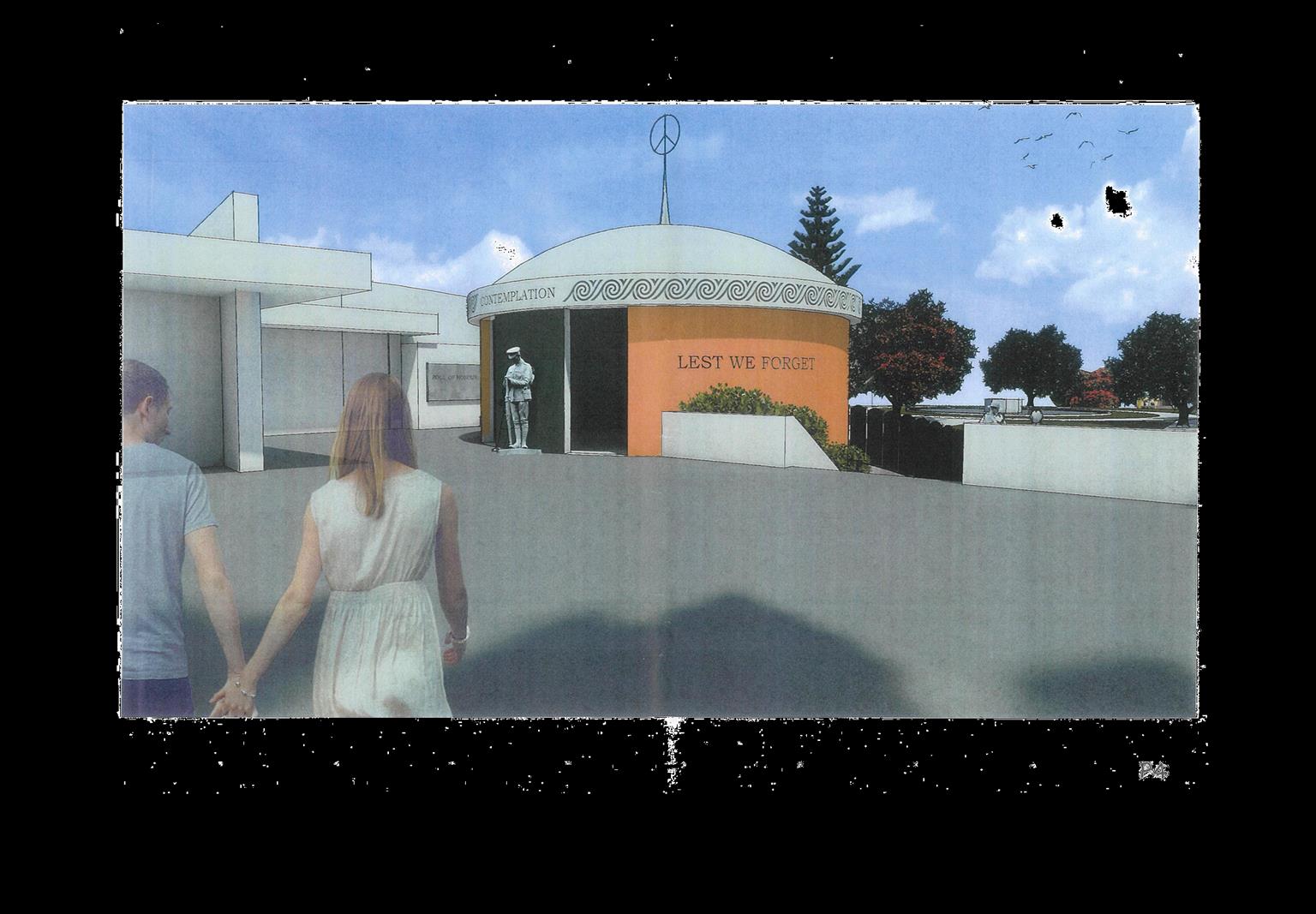 Extraordinary Meeting of Council - 29 June 2018 - Attachments
Item 1
Attachments B
23
Extraordinary Meeting of Council - 29 June 2018 - Attachments
Item 1
Attachments B
23
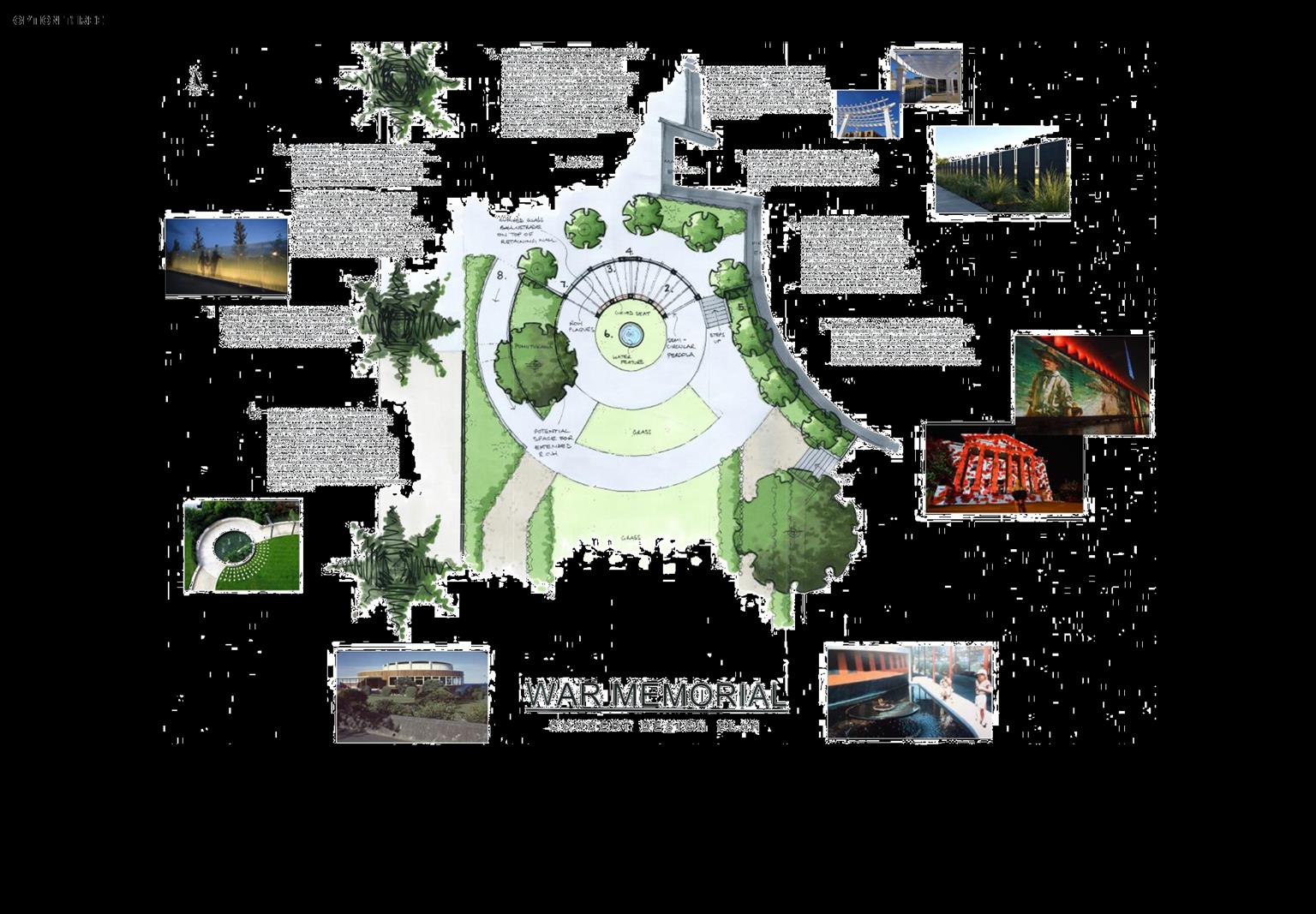 Extraordinary Meeting of Council - 29 June 2018 - Attachments
Item 1
Attachments B
25
Extraordinary Meeting of Council - 29 June 2018 - Attachments
Item 1
Attachments B
25
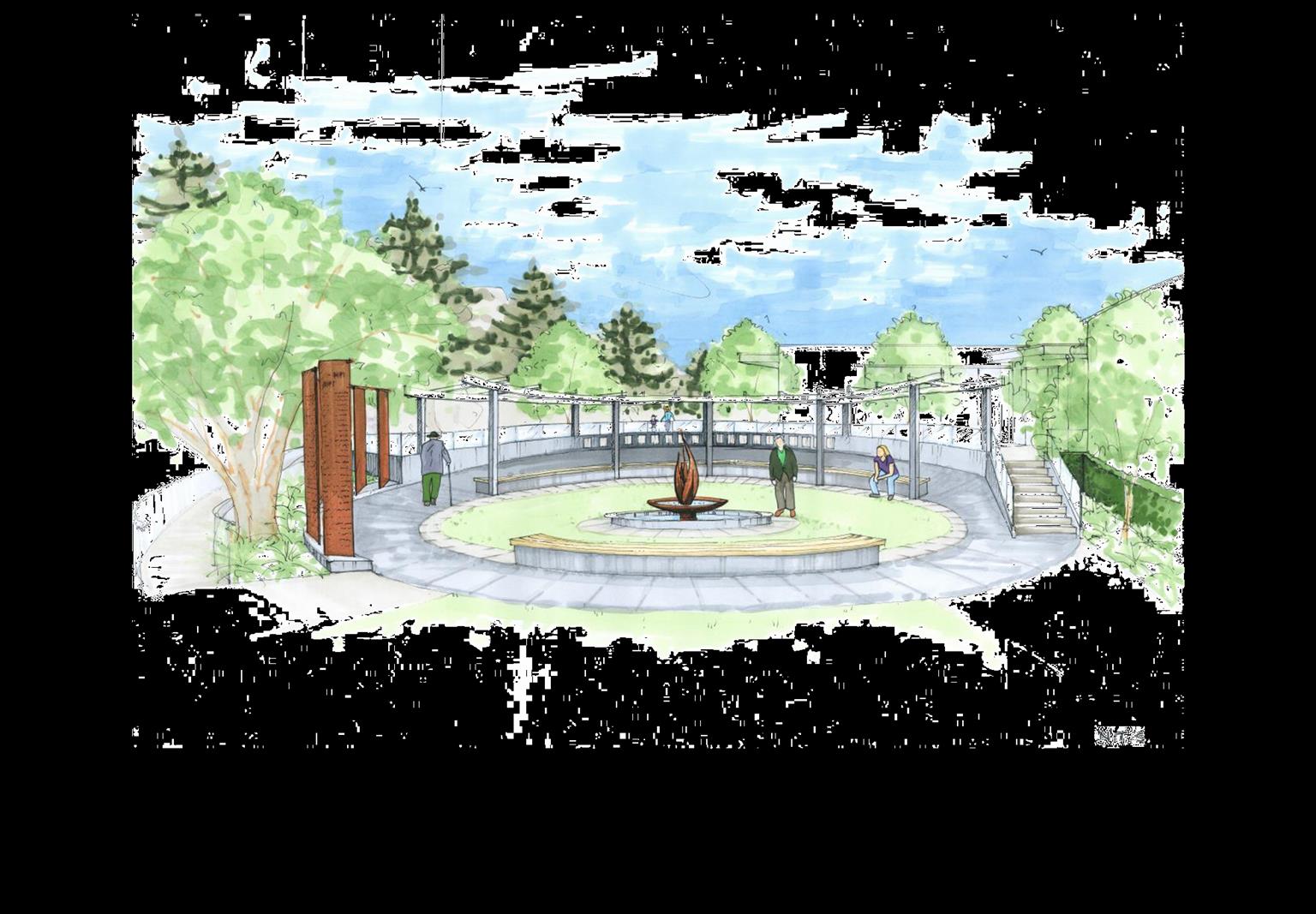 Extraordinary Meeting of Council - 29 June 2018 - Attachments
Item 1
Attachments B
27
Extraordinary Meeting of Council - 29 June 2018 - Attachments
Item 1
Attachments B
27
 Extraordinary Meeting of Council - 29 June 2018 - Attachments
Item 1
Attachments B
29
Extraordinary Meeting of Council - 29 June 2018 - Attachments
Item 1
Attachments B
29
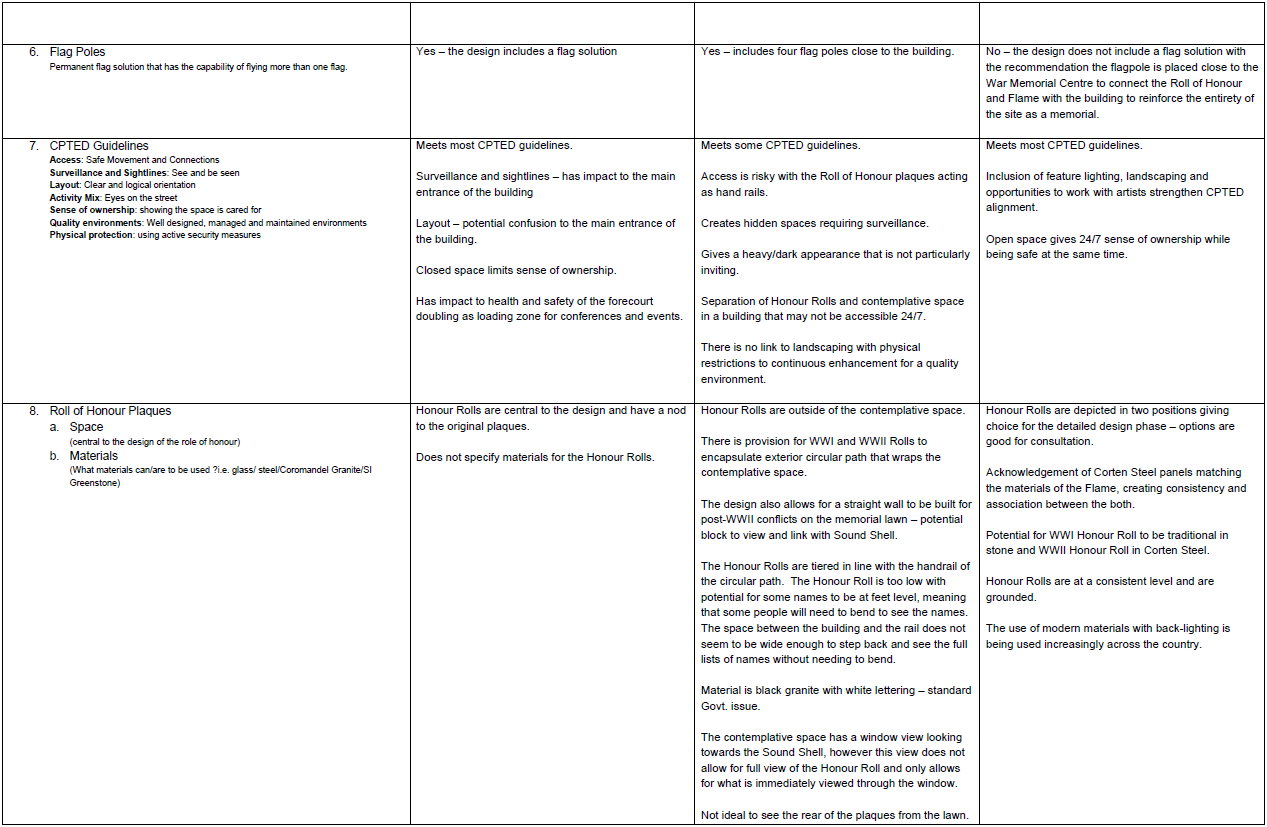 Extraordinary Meeting of Council - 29 June 2018 - Attachments
Item 1
Attachments B
31
Extraordinary Meeting of Council - 29 June 2018 - Attachments
Item 1
Attachments B
31
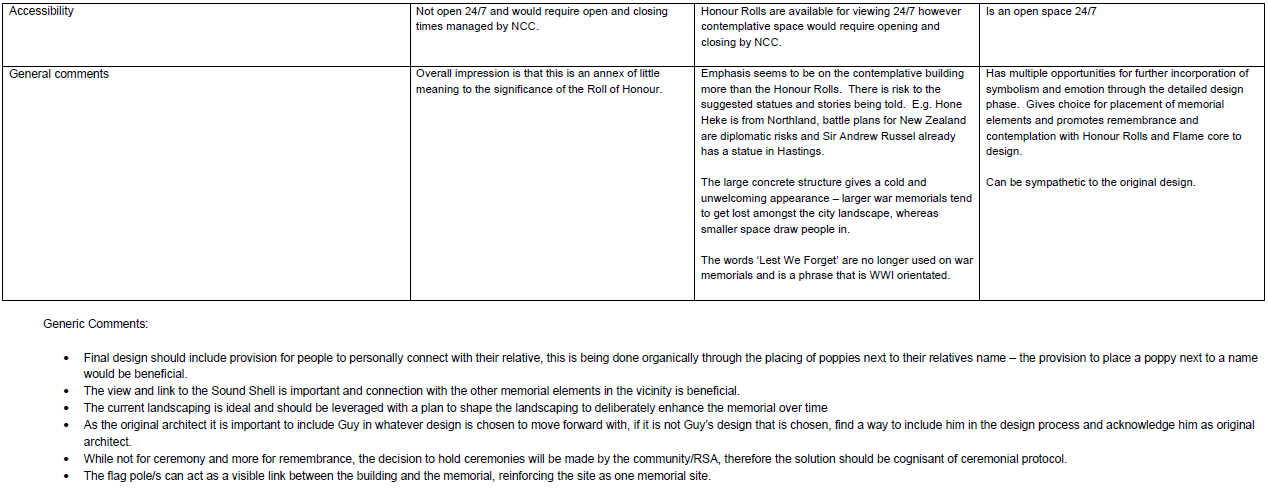 Extraordinary Meeting of Council - 29 June 2018 - Attachments
Item 1
Attachments B
33
Extraordinary Meeting of Council - 29 June 2018 - Attachments
Item 1
Attachments B
33
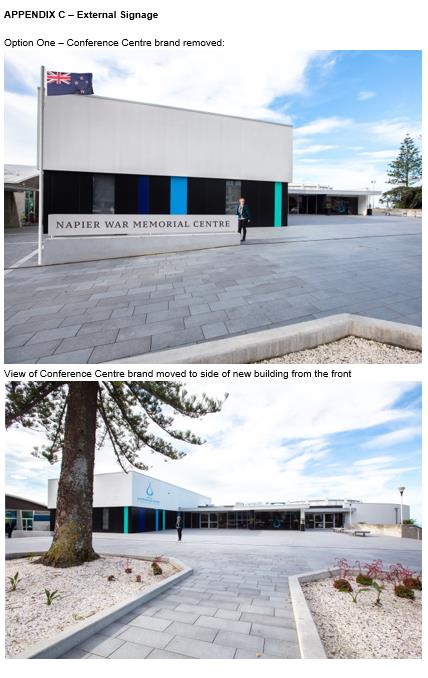 Extraordinary Meeting of Council - 29 June 2018 - Open Agenda
Item 2
35
Extraordinary Meeting of Council - 29 June 2018 - Open Agenda
Item 2
35
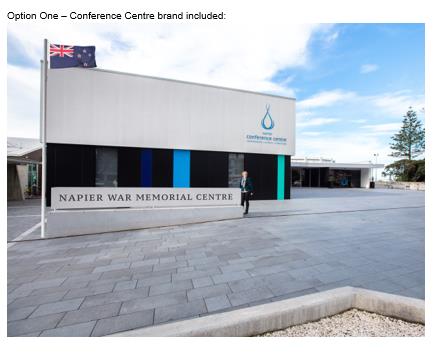 Extraordinary Meeting of Council - 29 June 2018 - Open Agenda
Item 2
36
Extraordinary Meeting of Council - 29 June 2018 - Open Agenda
Item 2
36

 Extraordinary Meeting of Council - 29 June 2018 - Open Agenda
Item 2
37
Extraordinary Meeting of Council - 29 June 2018 - Open Agenda
Item 2
37
Document Outline
- Contents
- New Reports
- 1. War Memorial Design
- 2. Amendment to Fees and Charges 2018/19
- 3. Carry forward of projects in progress to the Long Term Plan 2018-28
- Recommendation
- Attachments
- Attachment A - Prior year projects included in the Long Term Plan 2018-28
- 4. Adoption of the updated underying documents associated with the Long Term Plan 2018-28
- Recommendation
- Attachments
- Attachment A - Capital Plan 2018-28
- Attachment B - Financial Strategy 2018-28
- Attachment C - Infrastructure Strategy 2018-28
- Attachment D - Significant Planning Assumptions 2018-28
- Attachment E - Council Policies
- 5. Adoption of Development and Financial Contribution Policy
- Recommendation
- Attachments
- Attachment A - Development and Financial Contributions Policy 2018
- 6. Adoption of Long Term Plan 2018 - 2028
- Recommendation
- Attachments
- LTP 2018-28 [published separately]


















